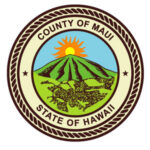Neutron-1, a 3U CubeSat small satellite involving more than 100 University of Hawaii students, faculty, staff and volunteers, successfully launched as part of an International Space Station (ISS) resupply mission from NASA’s Wallops Flight Facility in Virginia on Friday, October 2. Neutron-1 was aboard the Northrop-Grumman 14 rocket that included other satellites, and will be in space for approximately one year. Around mid-November, when astronauts set up the deployer pod for launch out of the ISS, the satellite will study the relationship between the Earth and the Sun by mapping neutrons in low Earth orbit.

The science mission was proposed in 2011 by Peter Englert, a Hawaii Institute of Geophysics and Planetology researcher and principal investigator for the Neutron-1 Mission, and Lloyd French, Hawaii Space Flight Laboratory (HSFL) researcher and project manager for the Neutron-1 Mission. The Neutron-1 project was funded by a NASA EPSCoR Research Infrastructure Development award.
“This is a great achievement of the UH Neutron-1 team of students, staff, and faculty,” said Englert. “It demonstrates the quality of undergraduate education and research in space science and engineering at the university.”
French said, “This mission development demonstrates that HSFL can deliver flight hardware and work collaboratively with other institutions regarding NASA planetary exploration. Small spacecraft and cubesat architectures are the next generation of planetary robotic exploration, and HSFL is poised to take advantage of the opportunity.”
Amber Imai-Hong, an avionics engineer at HSFL, ground station coordinator for the Neutron-1 mission, and member of Maui Economic Development Board’s 2020 EMER-GEN® planning committee, noted, “Watching the launch live on NASA TV was an opportunity to reflect on how far we have come as a team, how many students in Hawaii were inspired by the project, and all of the lessons that we learned along the way.”
Imai-Hong concluded, “The HSFL team is now gearing up for mission operations. We will control Neutron-1 via the GlobalStar network, and partner with amateur radio operators to communicate with the satellite through HSFL’s Kauai Community College Ground Station to receive and send messages to the satellite when it is released from the ISS in November.”
Amber Imai-Hong, HSFL Avionics Engineer, Neutron-1 Ground Station CoordinatorIt was an extraordinary experience for UH and all of Hawaii to watch Neutron-1 launch. It can still be viewed on the HSFL website.
